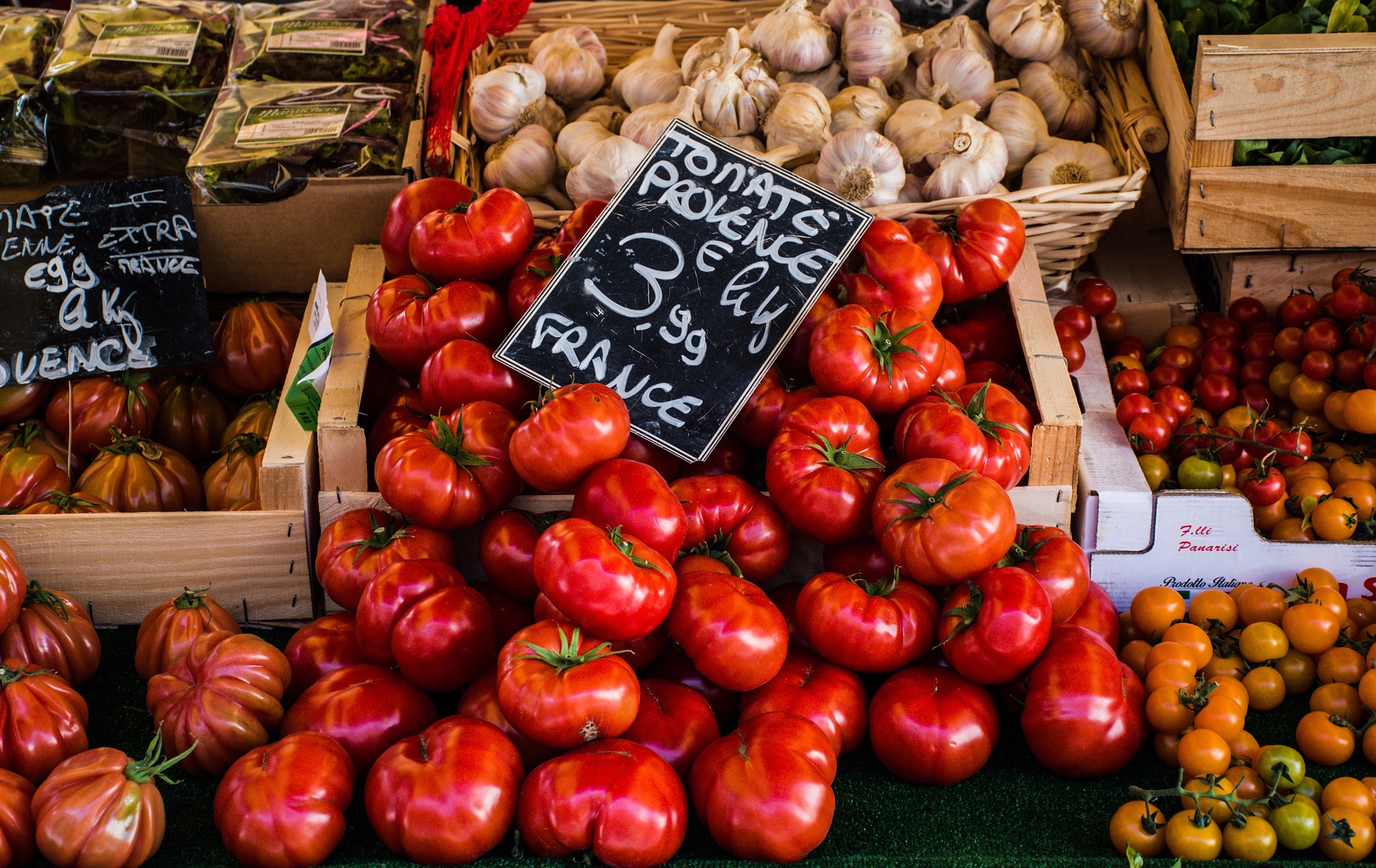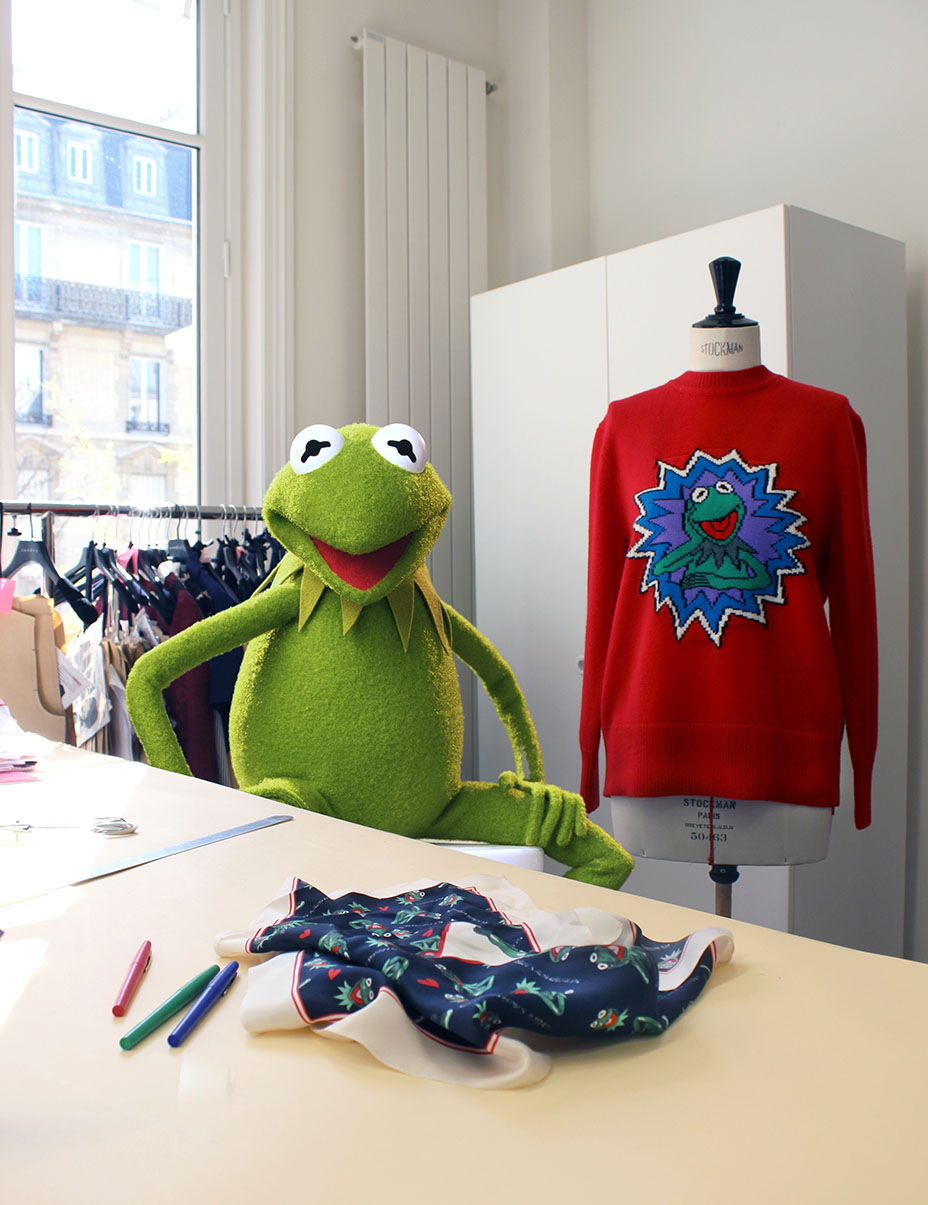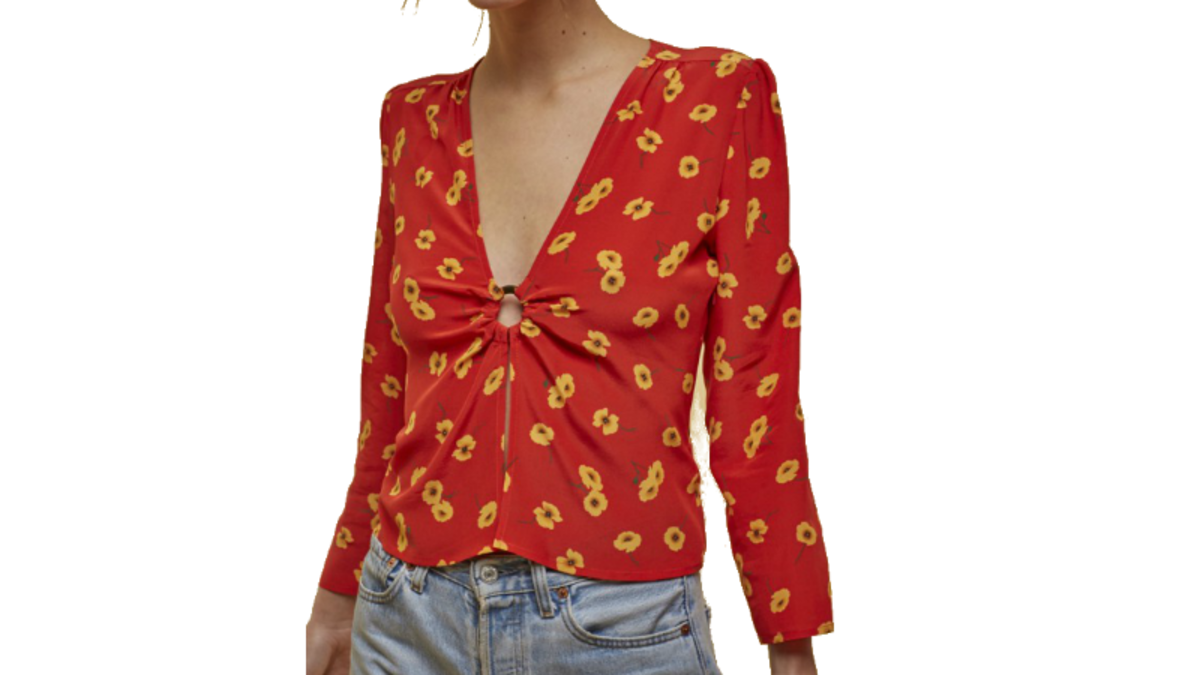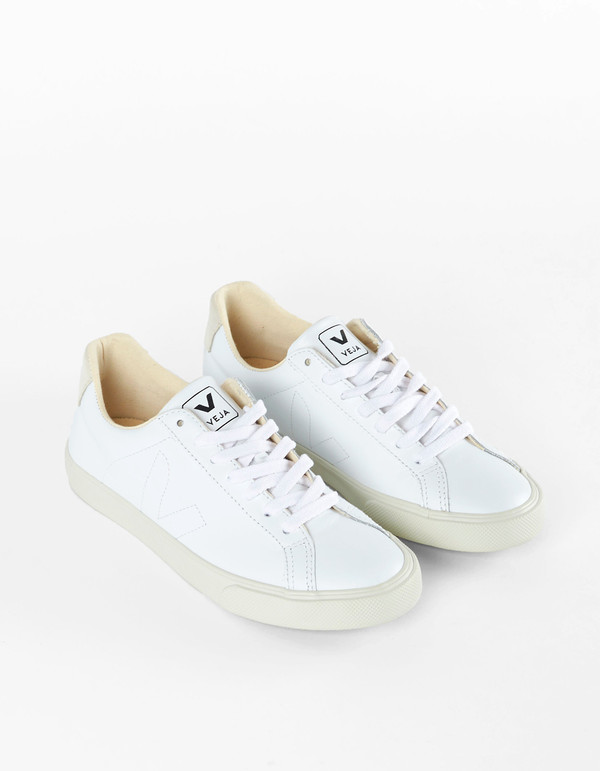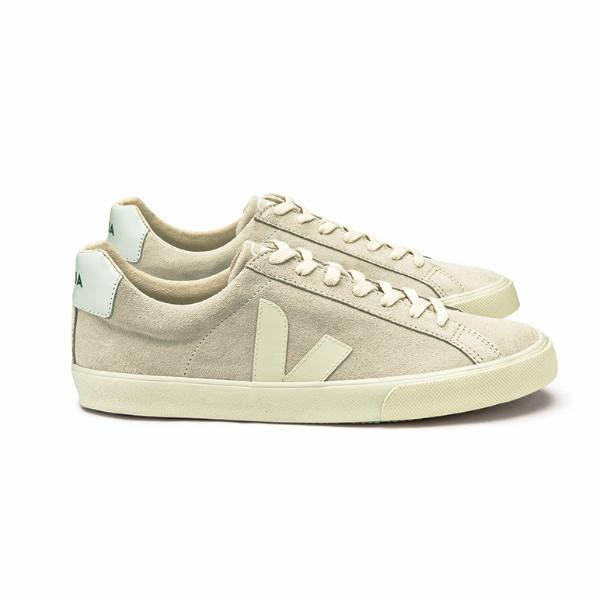
New French Feminine Lingo To Learn
New French words to finally reflect the number of women in the workplace.
The French language is set to undergo quite the transformation after the council charged with safeguarding the French language abandoned it’s opposition to the feminization of job titles.
The Academie Francaise, or “French Academy,” has declared in a new report that the 36-member body saw “no obstacle in principle” to feminine versions of French words for professional titles and that they were open to “all developments in the language aimed at recognizing the place women have in society today.”
The French Academy was established in 1635 under Louis XIII and hasn’t made any decisions regarding the matter since 2014, when it ruled that the mayor of Paris was guilty of crimes against grammar by championing a gender-neutral version of her job title. While feminine versions of job titles, although technically unofficial, are already used widely in France, and several French-speaking countries such as Canada have already embraced feminizing nouns when appropriate.
Unfortunately the proposal was not welcome news for many French language purists. MP Julien Aubert recently tweeted that "For the first time in its history, language was reshaped under the pressure of politicians and lobbies, and the Academie Francaise eventually surrendered.” While the ultimate fate of these linguistic changes are still to be determined, the cultural impact will be certain.
Looking to avoid as much confusion as possible in your French linguistics journey? Our native instructors and immersive group classes can help you make sure you are up to to date on all of the new lingo! Click below to learn more.
Financing French Food
You’ve heard of Farm-to-Table, now get ready for “field-to-fork.”
France’s agriculture minister sought to reassure households that food shopping bills would not rise dramatically as an increase in minimum food prices aimed at raising farmers’ incomes came into effect on Friday.
The government had halted the measure in December in the midst of “yellow vest” protests over high living costs. Didier Guillaume, the country’s agriculture minister, noted that prices of goods sold in supermarkets at a discount ( including Nutella, Coca-Cola) would increase a meager 5%. This all comes part of the “field-to-fork” bill introduced by President Emmanuel Macron to win support among farmers regarding their concerns of being hit by low margins and ending up the victims of retail price wars.
Michel-Edouard Leclerc, CEO of supermarket chain Leclerc, has branded the food price increases a “scam” and said farmers would not see higher prices as the chain typically makes a margin of 30-40 percent on farmers’ products.
The new legislation includes a 10% increase in the price floor for food products and curbs promotional offers so that retailers cannot discount products by more than 34% of their value which is said to bring the average household shopping bill to increase by anywhere from 50 cents to 3 euros a month.
We hope you’ve enjoyed learning how customers will be Financing French Food! Do you think this bill is a good measure to protect farmers? Join the conversation below!
What You Need to Know About French Dual Citizenship
You can immigrate to France without fear of losing your stars and stripes.
It only takes one trip to France to see how so many have fallen in love with everything encompassed within it’s boarders. From Paris to Bordeaux, there is truly something for every tourist to enjoy - sometimes so much that one may wish to spend more than just 30 days. If you’re American and wish to also have French citizenship, you are in luck as it's possible to live in both by obtaining dual citizenship.
If a person is born in France to at least one French parent, he automatically gains citizenship at birth; otherwise, those born in France to foreign parents have the option of obtaining citizenship at birth or later in life. Those that have lived and worked in France for 5 years, or those who have been married to a French citizen for more than three years, can apply for naturalization. Refugees, former French military workers and people who come from a country where French is the official language are all eligible to apply immediately for French citizenship.
A word of warning, however, is that submitting an application can be a daunting and challenging process, and it is crucial to have the correct documentation available including: a valid birth certificate, proof of address, identification, evidence of employment & residence in France, and proof of marital status to name a few. As far as the wait time goes, the entire process can take up to 2 years once the official application has been submitted (the perfect time to start brushing up on your French). In general, the French are much stricter than Americans when it comes to fluency in an applicant's second language and are usually interviewed at least once in French to demonstrate a full working proficiency of the language.
If you’re worried that your newfound citizenship may put your U.S. citizenship in jeopardy, fear not! As of now, no American will forfeit citizenship by gaining citizenship in another country.
We hope you’ve enjoyed learning about What You Need to Know About French Dual Citizenship! Ready to brush up on your French so that your fluent for your interview? Our native instructors and culturally immersive group classes are sure to have you covered. Click below to learn more!
Bubbling Over
A fizzy mouth feel begins with a second round of fermentation.
Champagne.
While many know it as a beloved celebratory beverage, it also has deep roots in the region of, you guessed it, Champagne. However, there was a heavy influence in the surge of the bubbly wine brought on by one of France’s greatest trading neighbors: the English.
In reality, the champaign we enjoy today is much like the beverage the English created by mistake. Benedictine monks were supplying them with still wines from Champagne, red and white wines which were left on the London docks during the sub freezing winters. The wines eventually got cold so they started undergoing a second fermentation causing them to become carbonated.
According to popular belief, Champagne was first created in the 17th century by a monk named Dom Pierre Pérignon, but it was English physician Christopher Merret was the first to describe the second fermentation process in wine to create fizz.
One of the byproducts of fermentation is the release of carbon dioxide gas, which is trapped inside the wine, causing intense pressure to build up, and in the 17th century, pressure inside these weak French wine bottles often caused them to explode. Originally, the French were horrified to find their wine containing bubbles, and considered it a fault, but many wine drinkers started becoming accustomed to the bubbly sensation, and soon Champagne gained its popularity worldwide. The English also rediscovered the use of cork stoppers, once used by the Romans but forgotten for centuries after the fall of the Western Roman Empire.
Speaking of corks, you may notice that one of the distinguishing features of champagne is the “muselet” or wire cage fitted over the mouth of a Champagne bottle. This ingenious addition was created in the 19th century to prevent the cork from popping out due to pressure from bubbles.
Though there were ups and downs throughout the history of champagne sales have grown steadily to over 200 million bottles since 1950. The increase in worldwide demand has prompted the French authorities to look into expanding the region's AOC zone to facilitate more production.
We hope you’ve enjoyed seeing how Bubbling Over wine led to the creation of one of the most famous celebratory beverages in the world. How much credit do you believe the English deserve for the creation of champagne? Join the conversation below!
French Music Icons You Should Know: Edith Piaf
With a life as notorious as her music, the chanteuse captured the hearts of millions.
Edith Piaf was one France’s first international superstars of the twentieth century, with her chart topping ballads like “La Vie En Rose”, “Non, Je Ne Regrette Rien”, and “L’Hymne à l'Amour.” She lead a life touched by drug and alcohol addiction, scandalously public love affairs, and all the melodrama only a French chanteuse could provide. Through the tumult, Piaf managed to capture the hearts of the French people and remains an icon 50 years after her death.
Photo: Gilles Petard
Before her twentieth birthday, Piaf had been exposed to some of life’s harshest knocks. She had recovered from from keratitis-induced blindness, lived in a bordello, and lost a child to meningitis. Piaf used her sorrow to fuel her trademark powerhouse performances, which boosted her to fame within the French nightclub circuit within the span of one year. Her stage name “La Mome Piaf”, slang for “The Little Sparrow” is attributed to her “waifish” stature of only 4’8” and increased the buzz around her performances. She was known to leave her audiences breathless with her ability to draw a thunderous voice from her petite frame.
Piaf shot to National fame during World War II and is attributed for raising the French people’s spirits during the German occupation of France. She played an instrumental role in the release of hundreds of French soldiers from Prisoner of War camps by using her influence over her German fans during negotiations.
She rose to fame in America following the war and throughout the fifties after a lone New York Times critic saved her first U.S. tour with a positive review. She became a French classic in the states nearly overnight.
With fame also came a return to her various vices and volatile lovers, and Piaf’s health tragically declined at the turn on the sixties. Her performances were plagued with fits of coughing and fainting until she was convinced to retire from performing by her loved ones. She died of liver cancer in 1963 and was granted the highest honor of having the French flag draped over her casket during her traffic-stopping funeral procession.
Piaf’s impact is still felt today with her pieces being covered by artists of every genre, used in film soundtracks and commercials across the world, and her own recording still topping streaming charts. Edith Piaf is proof the the biggest impacts can come from something small (and French.)
We hope you’ve enjoyed exploring French Music Icons You Should Know! Want to hear more of our favorite foreign artists? Click below to check out our official JP Linguistics Spotify playlist!
French Wind Farms At Sea
Making clean energy out of their choppy seas.
The French are among those leading the way on renewable energy and new strides have been made as The European Commission announced that 4 French projects promoting electricity generation from renewable wind energy sources to be in line with EU State aid rules.
Photo: CleanTechnica
The Commission approved French plans to support 4 demonstration floating wind farms for producing electricity. The “Groix Belle Ile”project will be located in the Atlantic Ocean, while the other three projects (“Golf du Lion”, “Eolmed”, and “Provence Grand Large”) will be located in the Mediterranean Sea. The floating wind farms will each be composed of 3-4 turbines will be installed in the sea on floaters which are interconnected with each other and connected to land through an underwater cable.
The Commission's 2014 Guidelines on State Aid for Environmental Protection and Energy allow Member States to support the production of electricity from renewable energy sources at the least possible cost for taxpayers and without undue distortions of competition in the Single Market. The goal is that France will reach a renewable energy production level of 23% by 2020.
Do you think these French Wind Farms At Sea will be enough to help France become energy independent / dependent on renewable sources of energy? Join the conversation below!
The French Wealth Divide
An investigation into one of the main causes of the “Yellow Vest” movement.
Inequality in France is one of the main drivers behind the present 'yellow vest' movement which is evidenced by the differences between different parts of the country when it comes to wealth. With its 13 regions, departments, and 36,000 town and villages, metropolitan France is home to 67 million citizens.'
Even though France’s high welfare spending helps keep inequality below the OECD (Organization for Economic Co-operation and Development) average, the country’s recent “yellow vest” protests have exposed a prevalent societal divide. Proof of this growing gap between rich and poor in France is best showcased by official living standards data provided by the country’s statistics body INSEE, which classifies every town, department and region according to its inhabitants’ average household income (wages, pensions, benefits, property income).
For extra context, in France and in Europe the poverty line is determined by the living standards of the entire population, and a person whose income is below a certain threshold of the median standard of living is considered poor.
INSEE set the poverty line threshold in France at 60 percent of the median income, which in 2014 was equal to €1,020 per month. Unsurprisingly, the greater Paris region of Ile-de-France is the richest in the country, even though the gap between richest and poorest is more striking than elsewhere with a GDP per capita of €67,926 in 2018. It should be kept in mind that money isn’t everything. Ironically, the poorest region in France, Corsica, is known as the country's 'Island of Beauty', with 19.8 percent of people living there living on less than the median income.
What do you think the French government can do to help bridge the gap between the rich and poor in France? Join the conversation below!
Quick and Easy French Cuisine
Julia Child wouldn’t have known what to do with all the free time on her hands.
If you frequent our Culture Blog, you may remember from “The Absence of French Take Out” that finding authentic French cuisine in a speedy package is no easy task, but this may all change for residents of Portland, Oregon. French Nutrition Coach, Laura Dubroca, has created French Fast Food: a new service that “provides customers with easy and delicious French dinner plans, recipes, and grocery lists with nutrition and flavor in mind.”
For those on the go, this is the solution for healthy meal planning that incorporates traditional French cooking techniques using fresh ingredients and recipes, and easy-to-follow steps. Think of it as France’s answer to Blue Apron if you will.
Fast French Food works as follows:
Every Thursday, customers that are participating in the program will receive a notification about the five dinner recipes that have been planned for the upcoming week. The five recipes will always include one vegetarian recipe, one extra-fast recipe, and nutrition advice from Laura herself. They will log in to their personal dashboard to access their recipes and printable grocery list.
Throughout the week, customers will use the easy-to-follow recipes to prepare simple, healthy, and delicious French meals. Each recipe includes a main dish and a side, a combination of herbs that can be used with each meal (to allow for less food waste), and seasonal vegetables and fruits. Recipes average 5-15 minutes of active cooking time, and can be finished and ready to eat within 10-45 minutes total.
Fast French Food provides the tools to create simple budget-friendly meals, and the knowledge for how to live a healthier lifestyle through cooking at home.
We hope you’ve enjoyed learning about how French Fast Food is helping people create Quick and Easy French Cuisine! What are your thoughts on this culinary breakthrough for lovers of French food? Join the conversation below!
Froggy French Fashion
Kermit is the new black.
There is a long history of pop culture icons endorsing various fashion brands, however it’s not everyday that one may find a puppet at the helm of a high end fashion campaign. French label, Sandro, has done just that with their newfound ambassador: Kermit the Frog.
Photo: Sandro
The collection’s pieces (over 30 in total) includes sweaters, scarves, and bags aimed at women & young children with the signature green hue.
"As a frog who usually works naked, it's not every day I get to be part of a high fashion collection. I really enjoyed going to Paris and working with Evelyne and her team at Sandro, who not only created wonderfully fun fashion, but repeatedly saved me from becoming an appetizer at Cafe Cuisses de Grenouilles," Kermit joked during an interview with The Hollywood Reporter.
Label founder Evelyne Chetrite explained why she turned to the lovable frog for her latest venture.
"I've been a huge fan of Kermit and all of the Muppets for many years," she smiled. "I watched the show as a child on TV and now my children follow them on Instagram. We have different reference points, but we all love their spirit, joy and fun attitude."
Prices range from $72 to $424 and will also be available to buy online.
We hope you’ve enjoyed learning about Froggy French Fashion! What are your thoughts on this newfound collaboration with Kermit and Sandro? Join the conversation below!
Signing with SACEM
A new deal ensures the dominance of the French musicians’ union.
Signing with SACEM
SACEM - the French Society of Authors, Composers, and Publishers of Music has recently signed a new deal with The Music Sales Group to take over digital licensing for portions of it’s catalog containing more than 120,000 works. The belief is that by expanding the society’s reach, it will be more effective in collecting royalties for their artists.
The agreement has been effective since July 1, 2018 in more than 130 territories across the globe. It covers famous composers and musicians from the 1920’s through today and has worked extensively with independent publishers to assist in digital licensing across the world. In 2018 alone, SACEM has linked up with PEN Music, The Music Goes Round Publishing, and IMPEL with The Music Sales Group joining as the latest high-profile partner.
CEO Jean-Noël Tronc has stated that he is pleased with the deal between the 2 companies and that the partnership has highlighted how SACEM has become an industry leader in multi-territory licensing.
“This partnership further cements SACEM’s industry position as the partner of choice for both international and independent music publishers.” - Jean-Noël Tronc
The SACEM organization has been advocating and collecting for musicians, composers, and songwriters since it was established in 1850. One year later, the professional union became a society (société civile) of authors, composers, and publishers who divided the author’s rights collected amongst the members, and this rule has been maintained to the present day.
We hope you’ve enjoyed learning about how The Music Sales Group is Signing with SACEM! Do you think this will be a victory for musicians around the world? Join the conversation below!
The Diverse Foundation of Orange Blossom
A French band finds inspiration outside of America’s sphere of cultural influence.
This week, we are spotlighting possibly one of the most diverse music groups on the planet, but more specifically, in France. Members of Orange Blossom -- a French electronic / world music group has come out with heavy praise recently for their affinity of Turkish music. While this may seem a bit odd, it comes as no surprise to anyone that is familiar with the band.
Orange Blossom consists of 3 members and was formed in Nantes in 1993 with their first album (which was self titled) Orange Blossom, came out in 1997 on the Prikosnovénie label, selling 15,000 copies.
Possibly the most interesting aspect of the band is the diversity of the members. The lineup has included Pierre-Jean Chabot (known as PJ Chabot) on violin and Jean-Christophe Waechter (known as Jay C.) on percussions and vocals. In 1994, Éric (organ) joined the band and a first audio tape was recorded in September and their first album, Orange Blossom, then released in 1997.
Before their second album came out, the group was influenced by ethnic and traditional music. They met and collaborated with several non-French artists, like Ivorian percussion group, Yelemba D'Abidjan, and Egyptian group, Ganoub. They toured in Egypt, France, and Belgium. Vocalist Jay C. left the band in 2000 and created Prajña. In 2002, percussionist Mathias Vaguenez and vocalist Leïla Bounous joined the group. The album Everything Must Change came out in 2005 on the Bonsaï Music label.
The group’s popular hit in Turkey, “Ya Sidi,” was used in the soundtrack of popular television series Cukur (the Pit).
When asked about Turkish music, drummer Arenas said he "loves" it and that he respects Turkish music and loves the ney -- an end-blown flute mainstream especially used in the Middle East -- as well the saz, a traditional Turkish stringed musical instrument.
“Because people want to copy the American music all the time, we have traditional music.”
We hope you’ve enjoyed learning about The Diverse Foundation of Orange Blossom! Who is your favorite foreign music artist? Join the conversation below!
France's Fast Food Epidemic
A global culinary capital is quickly succumbing to the convenience of a burger mcdo.
French food is known to be so amazing that UNESCO has declared it an important part of the world’s cultural heritage. While France’s eating habits have been known around the world for portion control, the use of basic foods and very few processed or fast foods, late last month a new report suggest that 30 million people could be obese in the country by 2030 due to fast food giants such as McDonalds that have begun to be a popular choice in many areas of both urban and suburban France.
Twenty years ago, José Bové, a sheep farmer, famously dismantled a half-built McDonald’s at Millau in southern France starting a national crusade against “la malbouffe” or junk food. However, it has been proven that France loves burgers as a survey published earlier this year by Gira Conseil has shown that the country’s 66 million people consumed 1.46 billion of them in 2017 and that the famous American export is featured on the menus of 85% of French restaurants. Bernard Boutboul, Gira Conseil’s managing director, describes the burger’s seemingly unstoppable rise in France as “a euphoria, a craze” that has now started to verge on “hysteria.”
France’s 32,000 fast-food outlets now represent 60% of the entire French restaurant business as healthy food is very rarely cheap in France. The country’s food processing and distribution firms are big and powerful and French eating habits are no longer a model of good eating.
We hope you’ve enjoyed learning about France’s Fast Food Epidemic. What are your thoughts on the changing landscape of modern French eating habits? Join the conversation below!
3 Must Try French Comfort Foods
They’re not guilty pleasures, they’re French.
The French are known across the globe as the masters of decadent dishes. We’ve even highlighted the fact that there is no real French take out in our article “The Absence of French Takeout.” While most American foodies are familiar with baguettes, croissants and crêpes, French cuisine spans much further. If you're planning a trip to France be sure not to skip these 3 must have dishes.
Soupe Au Pistou
Soupe au pistou originates in Provence as an example of a vegetarian-friendly dish in the French cuisine. In its original form, the soup includes pancetta, but can be altered to be completely vegan while maintaining the flavors from the tomatoes, white beans, and pasta. Be sure to remember the cup of pistou (the French equivalent to pesto) at the end of the recipe before serving!
Flamiche
Most Americans are familiar with the brunch standard, quiche, which is basically a pie made of fluffy eggs. Fortunately, French cuisine features many variations on this winning formula, such as flamiche - a French leek pie. Originating in Northern France, flamiche is comprised of a flaky crust (loaded with butter) and a filling that's stuffed with leeks and light on the egg. Unlike a quiche, the flamiche's crust covers the whole pie, so you’ll be able to savor the pastry in every bite.
Canelés
Wine may be Bordeaux’s claim to fame, but the region also brought us the delightful custard-filled pastry bites known as canelés. The mini dessert found throughout France contains caramelized rum and vanilla and a soft, yielding, custardy interior and pairs exceptionally well with espresso or a café au lait.
We hope you’ve enjoyed 3 Must Try French Comfort Foods. Planning a trip to experience France in all of it’s culinary glory? Our culturally immersive classes and native instructors can help ensure that your meal is ordered with perfect precision! Click below to learn more.
JP Linguistics Holiday Gift Guide 2018 - Our Favorite (Authentic) Gifts From Around The World
Let us help you find the perfect French, Italian, Spanish, and Latin American gifts this holiday season.
The holidays are upon us and, this year, we wanted to round up a few of our favorite (authentic) foreign brands and share unique products with you, ideal for stocking stuffers and holiday gifts. Why did we create this guide? It’s because we know that sometimes around this time of year, gift-giving can feel like an obligation rather than a genuine act of kindness towards someone else. So, instead of picking up a random gift for someone just because, we wanted to introduce you to some (foreign) brands we love to make your gift giving more unique and thoughtful. What we look for in brands we love is authenticity and this guide has just that. We’ve included brands from France, Italy, Spain and South American (some of whom we know personally, but none of which we are being paid to advertise for) such as Le Slip Français, Mille Feuille Bakery, Asaro, Leone, Jolii Cosmetics, 1880, Ecoalf and more.
In addition, some of these brands have incredible philosophies that we are proud to support. For example, Ecoalf is a company from Spain that upcycles waste found in our oceans to create some of their products including shoes. Marianella Asto is an artisan from Peru who handcrafts alpaca wool gloves and sells them via her shop online with UNICEF. Asaro is a family-run organic olive farm based in Sicily that manually harvests their olives (making all of their products GMO and chemical free). Learn more about these brands by browsing through the entire guide which you can download below. The PDF includes links to each product for easy shopping. We hope you enjoy and, if you happened to buy any, let us know! We’d love to hear about your experience and if you love them just as much as we do.
Happy Holidays from all of us at JP Linguistics!
Virtual Reality Fashion
With the dawn of “digital supermodels,” sample sizes are going to be even harder to fit into now.
The world-renowned French fashion company Balmain has officially unveiled its “Virtual Army” campaign complete with 3 lifelike digital models, known as Margot, Shudu, and Zhi which will be used to promote the brand’s latest fashion designs.
Photo: Balmain
For starters, Balmain is a French luxury fashion house that was founded by Pierre Balmain in 1946.
It currently operates 16 stores, including the one recently inaugurated in Los Angeles, and plans to open additional outlets over the next 5 years. Balmain was born in 1914 in France. His father owned a drapery business and his mother and sister owned a fashion boutique where he often worked after his father's death in 1921. He attended the École des Beaux-Arts in 1933-1934 with intent to study architecture but instead ended up spending the majority of his time designing dresses. After working for atelier Robert Piquet as a freelance artist and spending time with Edward Molyneux, he left school to work for him. He released his first collection in 1945 and his first fragrance, Jolie Madame, in 1949. Pierre Balmain was known as "a king of French fashion" and outfitted stars including Ava Gardner and Brigitte Bardot, the Nicaraguan first lady Hope Portocarrero, and Queen Sirikit of Thailand.
Shudu, is known as the “world’s first digital supermodel” and boasts almost 140,000 followers on Instagram.
“Anyone and everyone is always welcome to join Balmain army’s growing ranks – they need only share our bold spirit of adventure as our new virtual icons, Margot, Shudu and Zhi who mirror the beauty, the rock style and the confident power” reads Balmain’s official campaign statement. This is all made possibly by a collaboration with CLO Virtual Fashion, whose 3D designers input data from each item of clothing into a program and tailored the dresses to each model’s measurements.
As amazing as this technology may be, it has come up against some scrutiny online. On Instagram comments such as “Never going to be as good as real people with real souls behind the eyes. Not a fan,” & “No disrespect to the art of animation but this is just not right,” are amongst a slew of consumers who just may not be ready for the future of VR in the world of fashion.
We hope you’ve enjoyed how Balmain is bring Virtual Reality Fashion to life! What is your view on these new digital supermodels? Are they truly the future of the fashion world? Join the conversation below!
The Absence Of French Take Out
There’s one cuisine that’s still largely missing from the flood of food delivery options… French.
Let’s face it. We live in an on-demand world and, when it comes to our food, there is no exception. With the ever increasing options in food delivery services comes a hoard of dining trends attempting to appease users of the services. High-end restaurants are now offering customers transportable dining solutions to enjoy in the comfort of their own homes. However there’s one cuisine that’s still largely missing from the flood of food delivery options.
French Cuisine.
To understand why this is the case, one must get to the root of French eating traditions. A 2010 French survey found that 80% of all meals in France are enjoyed in groups and, the preparation is as much a part of the dining experience as the meal itself.
French culture is very restaurant-focused and it is a prevailing attitude in the community that dining is viewed more as an event rather than just a means for sustenance. The fashion in which the food is plated is also a huge aspect to French cuisine.
Joachim Borenius, head chef at Sydney’s French-leaning modern Australian restaurant, Bouche on Bridge, stated that he “[doesn’t] think there’s a lot of food that transports well…At the end of the day, I don’t think there’s any benefit for any type of food to be transported.” Borenius believes that while more “canteen-style” foods don’t go bad as quickly, stuffing any French dish into take-out containers would be a tragedy since “A lot of the meals are cooked to be enjoyed as soon as possible [&] when I plate food on the pass, I want it to be with the customer in the next few minutes."
We hope you've enjoyed learning about why there is an Absence Of French Take Out! What is your opinion on this phenomenon that seems exclusive to the French cuisine? Join the conversation below!
C'est Quoi Black Friday?
America’s exports to the country include McDonald’s and the once-a-year activity of getting trampled by hoards of shoppers.
This year, 6 French companies have joined to launch an event akin to America's 'Black Friday'
Unlike the one day tradition in the United States that takes place the day after Thanksgiving, France's 'Black Friday' will occur from April 27th to May 1st.
The six brands involved include:
French fashion and home decor shop La Redoute,
Rueducommerce,
an online distributor of consumer computer and electronic products for individuals, administrations, and schools
One of the hopes of the organizers is to eventually create a nationwide event that proves that “French e-commerce is dynamic" according to CEO of Cdiscount, Emmanuel Grenier.
As one may expect, the larger goal is increased sales earlier in the year outside of the traditional winter and summer sales. In fact, "C'est Quoi Black Friday?" - What is Black Friday? - has been the headline of many newspaper articles each November over the past few years in an attempt to explain the madness to the French.
France launched a version of Black Friday five years ago, but it took some time to catch on with the French public that are used to the traditional winter and summer sales periods.
We hope you've gained a little insight about the French adoption of the American tradition of Black Friday! Looking to experience the relatively new shopping phenomoenon in France first hand? Our culturally infused classes with native instructors can have you on the road to fluency faster than you can say "C'est Quoi Black Friday?!" Click below for more info.
The Fight for Fast Food Employment
The mayor of Marseille fights to keep a McDonald’s chain open to keep jobs in a poverty-stricken neighborhood.
The French government are not known for their support of American imported fast food. However, in one French city, both the mayor and residents are teaming up to fight the closure of one of the most famous American fast food chains in the world, McDonalds. The land of fine dining is no stranger to pushing back against the importing of junk food, but the residents of Marseille are now fighting a legal battle to keep a McDonalds franchise that has become a massive job provider from closing their doors.
Jean-Claude Gaudin, the mayor of Marseille, and the city’s senator, Samia Ghali, have joined the campaign even though they are at political odds. If McDonalds continues with a plan to close its branch in Saint-Barthélémy, a north Marseille neighborhood which is wrought by gang violence, drug trafficking and high unemployment, the senator has vowed to “oppose its presence throughout Marseille.”
With a staff of 77 people, the McDonald’s is the second largest employer in Saint-Barthélémy, which has an unemployment rate of 30%. This unemployment rate is more than three times the national average and has become revered in the community by employing school dropouts and youth desperate for work after serving prison terms. The franchise-holder, Jean-Pierre Brochiero, has stated that the restaurant has not been profitable, but that he obtained a court order last week suspending sales based on the grounds that he had failed to comply with a legal obligation to consult employees.
The radical French farmer, José Bové, made headlines by bulldozing a McDonalds in a protest against US taxes on Roquefort cheese nearly 20 years ago. This did not stop the rise of the the fast food giant which has become one of the most profitable restaurants of its kind in the French market.
We hope you've enjoyed The Fight for Fast Food Employment! Do you think this lawsuit will be effective at keeping jobs at home in Marseille? Join the conversation below!
4 French Fashion Brands You Must Know
There’s more to la mode française than Hermès and Louis Vuitton.
The French have been responsible for some of the most famous fashion brands in the world including: Hermès, Louis Vuitton, Pigalle, and Chanel to name a few. In the world of flashy high fashion, it is easy to miss some of the hidden gems of what France has to offer, so we’ve put together a list of 4 brands you shouldn’t sleep on this year.
The Kooples:
The Kooples is well known as the goalpost for casual French fashion. They incorporate everything from slouchy tees, to wrap dresses, to lace-up platform boots. Their website even gives you specific notes on how to pair your ensemble perfectly for the ultimate French look (as well as a fair amount of je ne sais quoi).
Sézane:
This small French powerhouse launched their store in the NOLITA neighborhood of New York City only one ago, and have been making waves since they opened shop. Founder, Morgane Sezalory began selling her sister’s vintage clothing in 2004 off Ebay and with a little luck, and a keen sense of what the market craves, the brand has grown into the online shopping megastore it is now.
Musier Paris:
Founded by fashion darling AnneLaure Mais, this collection contains the best in French style incorporating gingham jumpsuits, off-the-shoulder dresses, beaded mini bags, and straw kitten heels. It’s fairly new still with only 2 seasons under their fashionable belt, it would be a good idea to start stocking up before the rest of the fashion hungry world catches the drift.
Veja:
Veja is taking the footwear world slowly but surely by using ecological and fair trade conditions and by crafting their shoes with cooperatives of small producers and social associations in Brazil and France. Ethics are valued highly at Veja as they have just released a line of vegan sneakers to conscious consumers.
We hope you’ve enjoyed 4 French Fashion Brands You Must Know! Now that you’ve mastered the French wardrobe, why not master the French language? Our native instructors and culturally immersive group classes are sure to put you on the path to fluency faster than you may have ever thought possible. Click below to learn more!
Streaming Success
Contrary to popular apprehension, streaming has revitalized the local French music scene.
There has been a growing sentiment in recent years that the shift from physical music acquisition to digital has been a burden on independent artists. To contrary, it has only increased the popularity of music, specifically in France, but also amongst local artists.
In the first half of 2018, music streaming services in France grew almost 40% and make up almost 60% of the total music market in France according to SNEP, the country’s trade organization for recorded music. They reported that there were about 27 billion music streams in France in the 6 month period equalling out to more than 1 billion streams every week.
This stands in contrast to the almost 20 billion streams that were made during the same period last year. Keep in mind that in the first half of 2015, there were only 7.5 billion music streams. Those that may want to attribute this to platforms that do not compensate artists should note that nearly 70% of the streams were made through paid services.
Both physical recordings and downloads, however, have been hurt by the success of music streaming. Last year 48% of music sales in France came from physical recordings and 5% from downloads, and this year 40% of sales came from physical sales and 3% came from downloads.
To paint the picture of what is driving this surge is in what the French are streaming. According to SNEP, local music acts are leading the market. 19 of the top 20 albums this year were French. A total of 16 of the acts in the list are considered rap artists. These numbers should ease fears in the country that streaming would internationalize the industry in France at the expense of French recording artists, who make use of a quota system on the radio.
We hope you've enjoyed Streaming Success! While the shift has certainly helped French artists, do you think this shift from owning music to streaming will be positive or negative in the long run of the music industry? Join the conversation below!



















